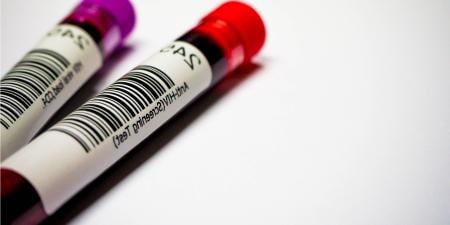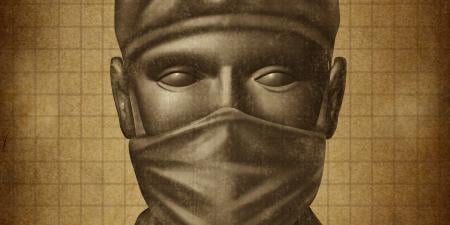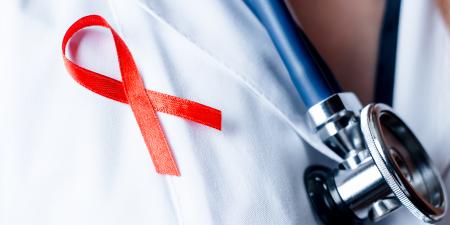It has long been established that health care workers (HCWs) are at high risk for occupational exposure to bloodborne pathogens. Historically, the predominant concern was the hepatitis B virus. But since the emergence of HIV in the early 1980s and the first documented case of needlestick transmitted HIV infection to a HCW in 1984, the concern for risk reduction has skyrocketed as a priority [1]. In reality, the actual risk of seroconversion after a single percutaneous needlestick is relatively low—approximately 0.32 percent. The risk of infection after a mucocutaneous exposure is even lower—approximately 0.09 percent [2]. In practicality, however, the precise risk of infection per exposure depends on many factors; it is related to the overall prevalence of HIV in the patient population served and the frequency of exposure to infected blood, along with the method of exposure [2]. Regardless of the complexity involved in quantifying risk of HIV infection with each exposure, an alarming number of needlestick injuries are reported to authorities by HCWs each year, so the cumulative risk of seroconversion is clearly not insignificant.
Prompted by growing concern for protection of HCWs, the Centers for Disease Control and Prevention (CDC) designed guidelines, termed Universal Precautions (UP), in 1987 to decrease occupational exposure to bloodborne pathogens. These guidelines encouraged HCWs to use gloves, protective eyewear, and aprons when in contact with patients visibly contaminated by blood. A year later, UP became mandatory with the passage of the Occupational Safety and Health Administration (OSHA) Bloodborne Pathogens Standard. These standards required employers to establish an exposure-control plan and offer training in UP to all workers at risk [3]. In 1995, the CDC updated its UP guidelines to include standard precautions (SPs), which recommend that HCWs use barrier protection for all patients to reduce the risk of acquiring infection from both identified and unexpected sources [1, 4, 5].
Despite this concerted national effort to implement guidelines for risk reduction, numbers of reported occupational exposures to bloodborne pathogens remain unacceptably high. As stated by Ganguly, et al., “Guidelines…are only as effective as the number of healthcare workers who adhere to them” [6]. HCWs, specifically physicians, have been shown to practice selective rather than universal precautions, which creates unnecessary risks to themselves and patients [4]. This noncompliance is, in part, manifested by continued alarming numbers of occupational exposures each year [1]. Clearly, acceptance and implementation of UP by HCWs are not as “universal” as the CDC intended for them to be.
Physicians-in-training are at a particularly high risk for occupational exposures to bloodborne pathogens. Most published data on this subgroup of HCWs come from self-administered surveys of medical students and residents and consistently suggest that this group is indeed at high risk, possibly even at higher risk for needlestick injury than other HCWs. And residents have been found to be at an even higher risk than medical students [7]. Alarmingly, between 25 percent and 75 percent of trainees report at least one work-related blood or body fluid exposure per year [8, 9]. In one study, medical students surveyed before and after clinical training reported decreasing interest in performing recommended UP practices to protect themselves [8]. Specific activities associated with the majority of occupational exposures in this group are administering injections, drawing blood, recapping and disposing of needles, handling trash and dirty linen, and attempting to transfer blood or other body fluids from a syringe to a specimen container [10]. Lack of experience with these procedures and with direct patient care may put physicians-in-training at increased risk for injury [9]. Moreover, trainees, like other HCWs, are under considerable stress and time constraints which also tend to create a climate of poor safety behavior [1].
There are myriad reasons why medical students and residents have suboptimal adherence to UP, and it is important to investigate the formal training in occupational-exposure risk reduction offered to this group. As previously mentioned, OSHA has mandated that all HCWs at risk for exposure to blood and body fluids undergo annual instruction in UP. Medical students, however, are not officially considered employees of the hospital in which they train and thus are not covered by these regulations [8]. This suggests that the responsibility for structured education of trainees should fall on medical schools, but there is little published information on optimal training methods or the effectiveness of training in increasing students’ knowledge of and adherence with UP.
High percentages (approaching 100 percent in one study) of medical students and residents report receiving prior training in UP and do not feel that lack of knowledge contributed to their suboptimal adherence [9]. One study at a Midwestern university, however, found that less than one-third of residents who responded knew the risk of contracting hepatitis B after percutaneous exposure, even though 40 percent of those same residents reported having had a needlestick injury during that clinical year [8]. In another study, only about one-half of students correctly identified the proper protective equipment needed for specific clinical procedures. These and other data suggest that the current formal training in UP may not correlate with better use of UP or reduced risk of occupational exposure [10].
An additionally unsettling finding is that many, if not most, needlestick injuries to medical students and residents go unreported. Surveillance studies show that only about 15 percent to 40 percent of incidents in this group are officially documented [7, 10]. Effective prophylaxis after exposure for both hepatitis B and HIV does exist, but, appropriate medical treatment cannot be offered if injuries go unreported. The practice of underreporting also undermines the validity of surveillance data, including incidence of exposure, the circumstances surrounding their occurrence, the HIV and hepatitis status of source patients, and, thus, the actual risk of seroconversion posed to residents and medical students [7]. The scope of the problem may be far greater than we are currently able to appreciate.
While exposure to serious and potentially fatal bloodborne infections is an inherent occupational risk in the medical profession, that risk can be reduced. With a striking three-quarters of medical students and residents reporting work-related exposure each year, additional efforts are essential [8]. The optimal algorithm for risk reduction, however, has not been outlined and is likely multifaceted, including education, workload modification, adequate role models, and periodic feedback. First, it is essential for medical school administrators to implement structured educational and clinical programs for risk reduction. Details of personal risk and specifics regarding UP procedures must be introduced during the preclinical years and constantly reinforced by peers and superiors during each clinical rotation. Second, efforts should be undertaken to design a strategy that incorporates both education and systems changes to ensure a sustained appreciation of and adherence to UP [4]. Lastly, students and residents should be informed of the hospital’s policies for reporting incidents and encouraged to report promptly all occupational exposures and receive proper follow-up care [10]. With early and continually reinforced training in risk reduction strategies, medical students and residents can develop behaviors that they will carry with them safely through their careers [9].
References
- Tucker A, Phillips WR. Medical students and infection control: risks and precautions. Tokai J Exp Clin Med. 1999;24(4-6):169-176.
-
Fraser VJ, Powderly WG. Risks of HIV infection in the health care setting. Annu Rev Med. 1995;46:203-211.
- DeJoy DM, Gershon RR, Murphy LR, Wilson MG. A work-systems analysis of compliance with universal precautions among health care workers. Health Educ Q. 1996;23(2):159-174.
- Gammon J, Morgan-Samuel H, Gould D. A review of the evidence for suboptimal compliance of healthcare practitioners to standard/universal infection control precautions. J Clin Nurs. 2008;17(2):157-167.
-
Centers for Disease Control and Prevention. NIOSH alert: preventing needlestick injuries in health care settings. 1999. http://www.cdc.gov/niosh/docs/2000-108/#1. Accessed September 15, 2009.
-
Ganguly R, Holt DA, Sinnott JT. Exposure of medical students to bodily fluids. J Am Coll Health. 1999;47(5):207-210.
- Radecki S, Abbott A, Eloi L. Occupational human immunodeficiency virus exposure among residents and medical students: an analysis of 5-year follow-up data. Arch Intern Med. 2000;160(20):3107-3111.
- Diekema DJ, Schuldt SS, Albanese MA, Doebbeling BN. Universal precautions training of preclinical students: impact on knowledge, attitudes, and compliance. Prev Med. 1995;24(6):580-585.
- Patterson JM, Novak CB, Mackinnon SE, Ellis RA. Needlestick injuries among medical students. Am J Infect Control. 2003;31(4):226-230.
- Norsayani MY, Noor Hassim I. Study on incidence of needle stick injury and factors associated with this problem among medical students. J Occup Health. 2003;45(3):172-178.



